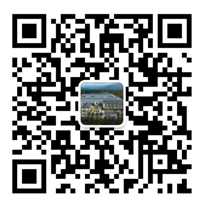Material and production process of transmission belt cloth
Drive belts are widely used in mechanical transmission and material conveying. As the core material of the transmission belt, the quality and performance of the transmission belt cloth directly affect the service life and efficiency of the transmission belt. This article will provide a detailed introduction to the main raw materials and production processes of transmission belt fabrics.
1、 The main raw materials for transmission belt cloth
Polyester fiber has become one of the preferred materials for transmission belt fabrics due to its high strength and wear resistance. Polyester fibers not only have good tensile strength, but also maintain stable performance in high temperature and humid environments. This has made it widely used in heavy-duty transmission belts.
Nylon fiber is known for its excellent elasticity and wear resistance, making it suitable for transmission belts that require high strength and durability. The flexibility of nylon material enables the transmission belt to effectively reduce vibration and noise during high-speed operation, improving transmission efficiency.
Cotton cloth has good flexibility and moisture absorption, and is commonly used in lightweight transmission belts. Cotton transmission belts are suitable for small and medium power transmission, especially in the food processing and textile industries, and are highly favored due to their natural material properties.
Polyvinyl chloride (PVC) material is commonly used as a cover layer for conveyor belts due to its excellent chemical resistance and wear resistance. PVC drive belts are not only resistant to oil and acid alkali, but also have good anti slip performance, suitable for various complex industrial environments.
Rubber materials have good elasticity and wear resistance, and are widely used in the covering layer and skeleton material of transmission belts. Rubber transmission belts can maintain stable performance under high loads and high speeds, making them an ideal choice for heavy machinery transmission.
2、 Production process of transmission belt cloth
The production process of transmission belt fabric mainly includes steps such as spinning, weaving, coating, and vulcanization. The following is a detailed introduction to each step:
Spinning is the process of processing raw materials such as polyester fibers, nylon fibers, etc. into yarn. The quality of yarn directly affects the strength and wear resistance of the transmission belt fabric. Therefore, in the spinning process, it is necessary to strictly control the thickness and uniformity of the yarn.
Weaving is the process of weaving yarn into fabric. According to the different purposes of the drive belt, different weaving methods can be selected, such as plain weave, twill weave, etc. During the weaving process, it is necessary to ensure the density and strength of the fabric to meet the requirements of the transmission belt.
Coating is the process of applying materials such as rubber or PVC onto the surface of woven fabric. The coating layer can not only increase the wear resistance and chemical resistance of the transmission belt, but also improve the friction coefficient of the transmission belt and enhance the transmission effect. During the coating process, it is necessary to evenly coat the material and ensure the thickness and adhesion of the coating layer.
Sulfurization is the process of heating the coated transmission belt fabric to form a stable molecular structure. The vulcanized transmission belt fabric has higher strength and durability, and can maintain stable performance in high temperature and high pressure environments.
3、 Application fields of transmission belt cloth
Drive belt cloth is widely used in various industrial fields due to its excellent performance. Here are some main application scenarios:
In the automotive industry, drive belt cloth is used to manufacture engine belts, fan belts, etc. These drive belts need to operate under high temperature, high speed, and high load conditions, thus requiring extremely high material strength and durability.
The food processing industry has high requirements for the hygiene and safety of transmission belts. Cotton fabric and PVC drive belts have become the preferred choice in the food processing industry due to their non-toxic, odorless, and easy to clean characteristics.
In the textile industry, transmission belts are used to drive textile machinery and transport textiles. Nylon and polyester fiber drive belts can meet the high-speed operation needs of textile machinery due to their high strength and wear resistance.
In the field of mining and heavy machinery, transmission belts need to withstand high loads and harsh environments. Rubber transmission belts have become an ideal choice in these fields due to their excellent wear resistance and tensile strength.
As an important material for industrial transmission and conveying, the quality and performance of transmission belt cloth directly affect the efficiency and safety of industrial production. Through continuous innovation and improvement of materials and production processes, transmission belt fabrics will play a more important role in the future.
-
 Email:wanss@kusan-if.com
Email:wanss@kusan-if.com
-
 website:www.kusan.cn
website:www.kusan.cn
-
 business address one:No. 3, Futai Road, Lancun Town, Jimo District, Qingdao, Shandong business address two:No. 99, Fengjin Road, Shangma Street, Chengyang District, Qingdao, Shandong
business address one:No. 3, Futai Road, Lancun Town, Jimo District, Qingdao, Shandong business address two:No. 99, Fengjin Road, Shangma Street, Chengyang District, Qingdao, Shandong

Scan the code
Copyright © 2020-2030 www.kusan.cn Qingdao Jiushan Textile fabric Co., Ltd. All Rights Reserved
website:www.kusan.cn address:No. 3, Futai Road, Lancun Town, Jimo District, Qingdao, Shandong ICP Certificate: ICP Lu No. 20021986-1

 简体中文
简体中文 Japanese
Japanese 한국어
한국어
